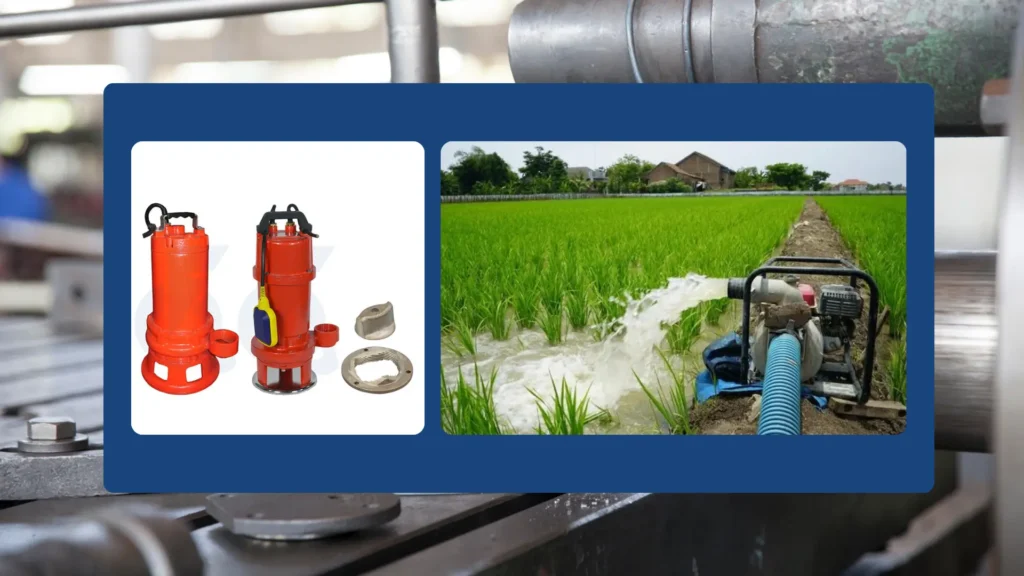Submersible pumps are a major help and play a crucial role in residential and municipal settings.
With such pumps, the movement of water and other liquids from one point to another is allowed with efficiency, hence making them very important in different usage scenarios.
Be it water operation in the basement or sewage in a municipal area; features and benefits associated with submersible pumps will let one understand what one’s choice is going to be in case one is considering purchasing a certain one.
What Are Submersible Pumps?
Submersible pumps are those designed to work when they are fully submerged in liquid.
While standard pumps must be maintained above the liquid, submersible pumps work perfectly when they are under liquid and can distribute water or any other form of fluid in a system.
They work through a conversion of electrical to mechanical, which consequently drives the action of an impeller that displaces the liquid upwards.
Sewage Pumps
They are designed to handle wastewater and solids and are common in municipal systems to move sewage.
Well Pumps
Located, many times, in residential locations, they supply groundwater from wells for house use.
Drainage Pumps
Applications include clearing basements that have flooded, construction areas, or other locations where water may amass.

Advantages of Submersible Pumps
Efficiency
Their efficiencies are one of the key benefits for submersible pumps.
Because they actually are submerged in the fluid they are pumping, they do not need the priming that many traditional pumps must have; this action saves much time and energy.
This efficiency will equate to lower operating costs, making them an economical choice for both residential and municipal applications.
Compact Design
Besides that, the design for submersible pumps is rather compact; hence, they will be able to fit into smaller spaces, making them very suitable for residential settings where space may be limited.
Unlike surface pumps, which may occupy a great deal of space and require a great deal of piping, installation of submersible pumps directly in the liquid they are transferring minimizes additional infrastructural needs.
Wide Applications
Another key benefit is that they can be used for a wide range of applications-from draining a flooded basement to sewage in municipal systems.
That makes them popular not only for household usage but also for municipalities.
Read More:
- Promotional Article on Sewage and Wastewater Submersible Pumps
- 6 Applications of High-Efficiency Submersible Pumps
- Types and Applications of Submersible Pumps in Agriculture
Applications of Submersible Pumps

Residential Settings
Submersible pumps have many applications in residential settings.
Homeowners quite often find them useful to be placed in home basements during heavy rainfall or flooding to remove excess water that would otherwise cause property damage.
They are also very common in wells to help in drawing water out for household use-a very reliable source of clean water for drinking, gardening, and other household purposes.
Such pumps are used by owners of swimming pools in the efficient draining and maintenance of their swimming pools.
Sewage and Stormwater
Submersible pumps are very much essential on the municipal side for sewage and stormwater.
These come in handing that allows cities to pump out large quantities of liquid fast with efficiency without incidence of flooding and unsanitary conditions.
They find their important application in wastewater treatment facilities where they help treat sewage and pump it to various treatment plants, thus helping safeguard public health and the environment.
How to Choose the Right Submersible Pump
First, check the depth of the area from which you need to pump out water; the design of every pump is different for different depths and pressures.
For example, well pumps are designed to reach a considerable depth to draw up the groundwater upwards effectively.
Now, consider the flow rate required.
This is the amount of fluid you’ll want to transfer within a fixed period of time.
Pumps are rated on their flow capability, so knowing your needs will let you select one that won’t overwork the system.

Another consideration is the source of energy.
Some pumps are electric, whereas others might require their power from other sources, such as solar.
Be sure to select one that is compatible with your energy resources and budget.
Finally, and most importantly, the need for professional consultation cannot be ignored.
Professionals can take a look at your situation in particular and recommend the most suitable pump for your application.
Maintenance Tips for Submersible Pumps
The routine maintenance of your submersible pump will surely help in serving longer and with efficiency.
Perform routine checks on the pump as part of the routine maintenance to catch issues that may be building up inside of it; this can be done in relation to power supplies, blockages, and general cleaning from debris.
It is advisable to clean the pump regularly, as sedimentation can interfere with the functioning of the pump.
Depending on your environment, some pumps may need to be cleaned more frequently for efficiency.
Also, be on the lookout for common issues such as abnormal noise or lowered performance that could signal problems needing immediate attention.
In most instances, early troubleshooting avoids larger and costlier repairs later on.
Conclusion
In short, submersible pumps are a priceless investment for both the homeowner and the municipality.
Their efficiency, versatility, and compactness make them perfect for such wide fields of application.
Regardless of whether it is residential or a municipal tender, understanding what exactly one requires and planning with experts is the surefire way to find the ideal solution.

